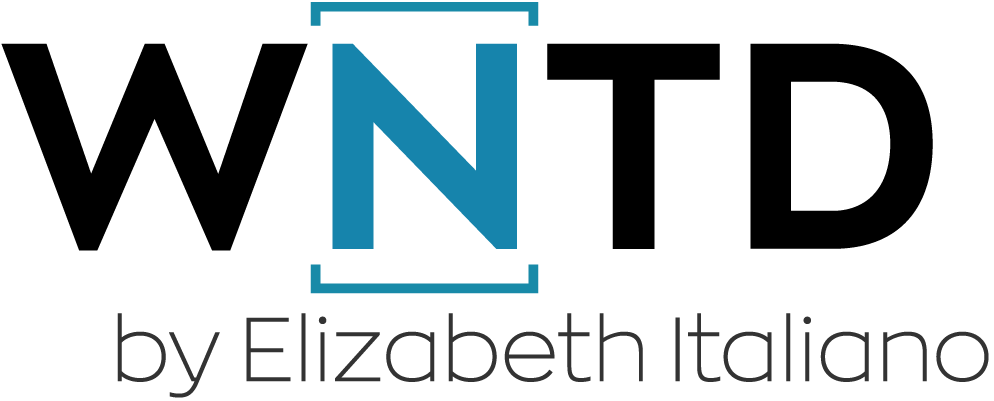This post originally appeared on Zdnet. It was written by Elizabeth MacAulay-Italiano and published by Paul Greenburg. The post, including Paul Greenburg’s introduction, is exactly as it appeared in the original publication.
Industry expert practitioner Elizabeth MacAuley-Italiano gives her take on customer engagement, its definition, framework, and its practicality. Pay close attention — this can help define what you do moving forward.
While I get set to release my newest book — about a month from now — I’m going to run some excerpts (maybe) and some awesome guest posts (definitely). That way, those of you starved for knowledge, which usually means your condition after you’ve read my stuff, will not be, because these guest posts are on topics of necessary interest and are also meaty (or veggie, if you aren’t a meat eater).
I’m starting this with Elizabeth MacAuley-Italiano, someone I’m happy to say is an expert on customer engagement. I’ve met her — and been duly impressed — over the past few months by her acumen, knowledge, and skills (pretty much all there is to be impressed with in a human being), Oh, and her good nature. That’s the other thing. She is an accomplished professional who has a long history in customer success, both management and, well, success. She not only has some definitive ideas on customer engagement, but also a methodology on execution of customer engagement strategies and programs. It starts with a definition and a framework, and so does she.
I have a keen interest in this area. In fact, I’m so diligently finishing up the final galleys on the very same topic. So, what she had to say got me thinking and going — as it will you. Read on. If you want to get in touch with her, you can schedule a call or learn more about her company, WnTD Partners, by clicking on the links I’ve given you here. No matter what you decide, however, read this.
It’s worth it.
Take it away, Elizabeth!
Fun fact: When you Google “What is the definition of customer engagement?” the results provide you with a whopping 38 pages of various definitions. A universally accepted definition is frequently sought after but often elusive. So, why is it so darn hard? Why does it feel like achieving the valuation for unicorn status is more attainable than defining customer engagement in a way that is universally accepted and meaningful?
It’s because we should be asking a different question and defining something even more important than customer engagement. What we should be asking and defining is “What is the desired state of customer engagement?” However, before I get into providing a definition, I’m going to take a few moments to provide some background on why this is so important and meaningful to determine.
A leader I once worked for (and still look up to), David Alston, said to me one day when I was puzzling over finding an answer to a particular question, that perhaps the problem didn’t lie in the answer being hard to find, but that the problem was in the question itself. He suggested that I should try looking at the problem differently and approach it with another set of questions. That has stuck with me ever since, and I believe this is one of those times that in order to get to the heart of the matter that we are truly trying to solve for we should re-evaluate why we are trying to define customer engagement in the first place and reconsider the question itself.
When customer success professionals and leaders are trying to define customer engagement, the root problems that we are often trying to solve for are decreasing churn, increasing expansion revenue, and reducing the cost to serve. A big part in achieving these goals is by creating an effective and scalable customer engagement framework (CEF) that enriches our customer relationships.
I’ll go as far to say that it can become a daunting exercise to create an effective framework when trying to use a single definition of customer engagement as your north star. Believe me, I’ve tried and I’ve worked with many others who attempted it that way too and it doesn’t work. Fortunately, I’ve found a method that does, and I’m going to share it with you.
The fact is, there is nothing wrong with many of the definitions out there but simply defining customer engagement is not going to help us achieve results. With that in mind, what we need to do is to flip this question on its head and look at this from a different angle. A “paradigm shift” if you will, to quote the late Steven Covey.
Defining customer engagement as a standalone term and outside of any proper context is as meaningful as stating “my churn is one.” One dollar? One customer? One User? One percent? My statement of “my churn is one” is difficult to understand without context.
But when you think about it, simply defining customer engagement (CE) without any context is just as fruitless. It’s also why trying to use a single definition of CE can feel so daunting. It doesn’t communicate something that is useful and practical that we can apply to our business and organization. It’s still very important to define CE, but it needs to be done in the context of both a bigger picture and something more precise.
We need a concept, definition, and framework that we can visualize implementing into our organization and that goes beyond having a pragmatic one sentence description. We need to understand what it means to us in the context of logic, emotion, and our business model. Further to that, because we are analytical beings that possess critical thought, we need to be able to define it in a way that is measurable. Herein lies why we need to be asking “What is the desired state of customer engagement?” (DSCE). We now have context and can measure customer engagement in relation to DSCE.
So let’s get to the two definitions. I define customer engagement as:
An output and offer of information from an organization with the intent to provide value to a customer, which in turn results in a causal effect on the customer’s intentions and actions.
So here we have a definition, but what do we do with it? This is where the desired state of customer engagement comes in, which is defined as:
An ongoing and mutually beneficial exchange between customers and organizations that leads to customers fulfilling their intention in order to achieve their goals and desires while also deepening the value of the relationship to the company.
Here is where the rubber hits the road. We now have something to do with the definition of customer engagement. We have something we can aim to achieve which is, helping customers fulfill their intention, achieve goals, while also deepening the value of the relationship to the company. In the world of customer success, this definition is one that allows for practical application in a customer engagement framework. This definition insinuates a desired outcome for both the organization and the customer. Achieving outcomes is the very essence of customer success.
For me, as a CS professional, when I made this shift and started using this model the process of creating engagement frameworks went from daunting to exciting. I could see in my mind’s eye how applying the desired state of customer engagement formula could help create an impactful customer journey that was measurable. I could clearly connect the dots between our efforts in our customer engagement framework and how it would help to deliver results to both the company and customers.
In a recent conversation with Paul Greenberg, we were discussing customer engagement, and he made the interesting (and true) point that the single thing all people on the planet have in common “is the desire to be happy.” This statement gives off a feel-good vibe like a warm fireplace on a cold day, but there is a resounding practical and applicable element to it as well.
Happiness, in the context of this topic, is how do we employ these concepts in a way that makes everyone happy so that both parties have a desire to continue the engagement, and leads to everyone being better off?
This is the crux of what we are looking to determine and measure. The higher your customer engagement score is relative to the desired state of customer engagement the better off both parties are and the more valuable the relationship is.
Defining these concepts is just the tip of the iceberg in this discussion. It’s now time to get into actionable guidance on what you can do with these definitions, how to apply them and the formula for creating and measuring the desired state of customer engagement. So don’t leave our fireside chat quite yet. Go refill your apple cider or wine, if you must, because we are now going to get to the good stuff, as I walk you through the framework and how to measure your results.
When I am evaluating customer engagement within an organization, there is a formula that I use to score the actual state of customer engagement vs the desired state of customer engagement, which is:
Customer intention + Anticipating needs and behavior + Successful product adoption + Outcomes at scale + Relationships + Communication and engagement + Customer education + Optimal customer journey = Desired state of customer engagement.
For the purposes of this post, I won’t get into the math behind the formula. I think it’s more important to discuss why each of these units of measure is important and what level of understanding we should have of each component.
So, let’s break it down:
CUSTOMER INTENTION
To understand customer intention, we should know why a customer started interacting or working with us. However, understanding customer intention goes a step further than simply assigning a known use case to a customer.
For example, understanding whether a customers intention is to go from an out of date process to a “new to them” way of operating or whether their intention is to switch from a competitive solution can put a different lens on how to best engage with customers during onboarding. There may be a steeper learning curve in the former scenario. There could be a higher degree of change management required as well, which can have implications on your customer engagement.
As another example, perhaps their intention is to find a key strategic solution to integrate into their business processes and the intended behavior and action is to adopt the solution at all levels of the company. Or perhaps you have a director with limited budget and their intention is to introduce your solution to their organization so that they can prove value with their initial small investment. Their intention could be using the licenses they are able to buy in order to make a case to senior leadership to have the solution adopted more widely across the company.
Think about yourself as a CSM in these scenarios. Would you adapt your approach when engaging with your customer if you had this knowledge? I believe you would (or at least that you should).
If we don’t know and understand the answers to these types of questions it is difficult to determine intent. Not knowing our customer’s true intention could undermine our efforts to be seen as a trusted advisor that understands their business.
ANTICIPATING NEEDS AND BEHAVIOR
The desirable mode of operation when it comes to customer success is to be operating proactively. In order to be effectively proactive we need to accurately anticipate customers” needs so that our efforts can have a positive impact. Understand and anticipating the needs of our customers allows us to answer questions before they are even asked and solve problems before they occur.
CS teams need to be less in firefighter mode and more in a strategic advisor mode. In order to do that adequately, we must be in tune with our customers. Understanding their intent and needs will also enable us to foresee and prepare for their behavior. When we can anticipate their needs and behaviors we are in a position to act proactively.
In order to evaluate this part of the equation we need to assess a number of factors which include (but are not limited to):
● Our understanding of what our customer’s needs are throughout their buying cycle and in their post-sale journey.
● Determine if we have the content and information ready for them when, where and how they need it, which helps facilitate our efforts to be proactive.
● Knowing if we are ready to support and guide them through prescriptive steps along the customer journey.
If the answer is “no” to any of these questions it’s time to revise your customer engagement and customer education strategies, perhaps even your overall customer success strategy. In order to have successful long term customer engagement and loyalty, it’s critical to address the above questions. If you don’t, your organization will likely score lower in the areas below as well.
SUCCESSFUL PRODUCT ADOPTION
Achieving product adoption is one thing but achieving successful product adoption (SPA) is an entirely different beast, and it’s one of the most important factors in reaching the desired state of customer engagement. Remember how part of the definition is “customers fulfilling their intention in order to achieve their goals and desires’? Well, they can’t achieve their goals and desires with your offering and product without SPA.
In order to achieve SPA status, we need to understand your customer’s goals, needs, uses cases, and intent. It’s also accomplished by creating a path that customers are guided down, which should be prescriptive and deliberate.
Measuring SPA is also not as simple as “Do they use our product?,” followed by a “yes” or “no” answer. It’s multi-faceted and requires deeper analysis. I’ll add the caveat that this deeper analysis does not need to be overly complicated but it does require more than answering one simple “yes” or “no” answer.
To understand if your organization has this piece of the puzzle solved you need to determine and internalize what successful product adoption looks like. You need to understand:
Whether your customers are engaging with your product in a way that helps them fulfill their intentions, realize their goals and the full benefit your solution can provide.
- Is it solving a pain or providing a benefit?
- Is it contributing to deepening the benefit of the relationship to the customer?
- Is there depth and breadth of usage?
- If there is low product adoption are there issues with the product preventing users from successfully adopting it? Are there major blockers such as bugs, usability issues, or a design that is not user-friendly?
ENGAGEMENT AND COMMUNICATION
At times Customer Communication and customer engagement are terms that are used interchangeably. It’s important to note the difference between the two so they are applied and measured correctly within the desired state of customer engagement framework
Where communication and engagement differ is that communication can be a one way or two-way exchange. Merriam Webster dictionary defines communication as, information communicated: information transmitted or conveyed. On the other hand, customer engagement has the purpose of a two-way exchange where communication does not necessarily have that intent.
With this in mind, ask yourself this: What is the purpose of your Customer Communication at your organization? How is it serving you and your customers? How are you currently differentiating between engagement and communication?
In the context of customer success, this differentiation is important because 99 percent of the time when we are offering information to our customers we are looking to drive action and/or deepen our relationship with our customers. If we think of the conversations and content that we create for our customers in this regard it can help shift our approach. When I make this distinction with CS professionals and leaders that I work with, the conversation often shifts from “What do we need customers to know and what information do we need to share?” to “When we share and offer information what do we want customers to do with it? What outcomes are we looking to achieve for both our customers and our organization?”
When the explicit purpose of sharing information is to drive action, fulfill intent, and help in the achievement of goals, the information we share tends to be focused more on the end result and not just the message itself. Content for the purposes of customer education is vastly improved and our engagement efforts are more effective. This leads to deepening the value of the relationship to both parties and promotes ongoing engagement.
This small adjustment to the way CS professionals think about communication versus engagement can be quite transformational, so I highly encourage you to take the time to think through it in this way. Evaluate your content, the information you share, and your approach to interacting with customers. How much is designed simply to communicate and how much is deliberately designed to drive a response and create engagement?
One last note on communication and engagement — a question that some of you may have and is worthwhile to address is: “What about when there is engagement but it’s negative?”. It’s a fair question and point. After all, customer engagement can be positive, negative or neutral. For example, you could be engaging with a customer because they are churning. Your customer engagement could entail executing on a strategy and plan to try and retain this customer, but they may end up churning regardless of your engagement and efforts. This results in a negative outcome, however, it is still customer engagement. But who engages with a customer striving for a negative outcome? Nobody. This is why all of the elements of the desired state of customer engagement are so important. They help to mitigate the risk of negative engagements and puts CSMs in a better position to manage them when they do inevitably occur.
RELATIONSHIPS
What does it take to reach relationship status with a customer? Just because someone is a user or a customer does not necessarily mean you have a relationship with them. Perhaps the foundation has been laid for a relationship and a transaction has been completed, however, if you do not have ongoing engagement with a customer then it’s difficult to establish a relationship.
Ask yourself:
- Is there an ongoing relationship pre and post-sale?
- Are you communicating with them in a way that promotes the desired state of customer engagement?
- Do they feel supported?
- Do you understand their needs, behaviors, and goals?
- Do customers feel they can achieve their goals through their interactions with your organization and the use of your product?
- Do your customers advocate for you?
If you don’t know the answer to any of these questions then chances are you’ll score low here as you don’t have a finger on the pulse of your relationships. Your relationships that do exist could be because of the efforts of a phenomenal customer success manager on your team. Although this is great, this is not scalable over the long term and across your entire customer base.
CUSTOMER EDUCATION
Herein lies the (not so) secret sauce of scaling customer success. customer education is one of the most effective and efficient ways to scale customer success. It helps to provide customers with the knowledge and know how that they need in order to successfully adopt a product.
In an ideal world your product is intuitive and requires little training or support, but as we know life isn’t always ideal. The majority of the time some element of training and sharing of best practices is necessary in order for a customer to achieve successful product adoption.
customer education comes in many forms from webinars, videos, professional services teams, to contextual guides, just to name a few. However, regardless of the format of how your customer education is delivered, there are key factors it should address, such as:
- Do you have content that has learning objectives for customers?
- Do you have content created with the specific purpose of educating customers on your product and industry best practices?
- Does this content help achieve successful product adoption?
- Are you leveraging technology to share educational content with your entire customer base? Or does it depend on 1:1 human interaction?
When you can answer a resounding yes to these questions then you can proudly earn high scores for customer education. An effective customer education strategy and process can have a tremendous impact on your companies health. It helps to increase customer lifetime value, reduce the cost to serve, and decrease churn, and you are doing all of that at scale.
OUTCOMES AT SCALE
One of the core functions of customer success is ensuring customers achieve their goals and outcomes. If a customer is not achieving them then there are three scenarios that are likely occurring. First, your organization sold to the wrong customer and as a result, their use case and goals are not ones that your product can fulfill. Second, there is an issue with your product that is preventing successful product adoption. Or third, you do not have an effective customer engagement framework in place. You may be communicating with your customers but not effectively engaging them. For example, you may not have proper customer segmentation resulting in an unclear understanding of intent and needs for some (or all) of your customers. In turn, you are not providing them with the appropriate onboarding and customer education path (or worse not providing any customer education at all). Therefore, they are likely not on an appropriate customer journey and less likely to achieve successful product adoption. This, in turn, leads to not realizing their goals and outcomes.
All of the preceding factors in the equation that we’ve covered so far will help to enable your customers in achieving their desired and required outcomes. However, these factors alone will not ensure success. Creating a customer engagement framework that offers a consistent experience, as well as reliable and predictable results, will help deliver on the achievement of goals and outcomes for both your customers and organization. Thus, deepening the value of the relationship to both parties.
Some ways to evaluate this part of the equation is to:
- Measure and monitor whether your customer base is achieving their goals and outcomes.
- Establish whether they’ve reached SPA status.
- Review Customer Health Scores
If you aren’t happy with the results you see, then evaluate your customer engagement framework to see what steps may be missing.
Optimizing the customer journey
I’ve always said that customers should not feel the bumps of your internal processes or fall through the cracks of your customer journey. If they do, it’s quite frankly not good enough. Whether you’ve mapped out a customer journey or not, your customers are going through some sort of a journey and you better make sure it’s a smooth one if you want to keep them as customers.
In order to achieve an optimal customer Journey, you need to create a customer engagement framework that follows the Three Ps. Which means it must be:
- Prescriptive
- Predictive
- Proactive
How do you know if your customer journey is addressing the Three Ps? There are a number of elements to examine. For one, take a look at your customer base and determine whether your Customer Journey is optimized for your different customer segments and/or tiers? Or is it a one size fits all approach?
Another factor you need to determine is whether your customer journey path provides a predictable and reliable outcome. Will doing A predictably achieve getting to B? I’ll add the caveat that predictability does make the assumption that you’ve sold to the right customers so you can predict a likely outcome and that your product is not experiencing any major bugs.
The last of the Ps to evaluate is whether your customer journey and customer success strategy are designed to allow CSMs to be proactive. Is your customer success strategy supported and aligned with the rest of the organization? Are your customer success Managers trained to be proactive and perform as a strategic CSM as opposed to a firefighter? Do they have the resources they require to act proactively?
By now you’ve seen some overlap in the factors of the equation. Predictability is mentioned in both outcomes and the optimal customer journey, as an example. This is intentional as all parts of the equation need to come together to achieve the desired state of customer engagement. These concepts cannot be solved for in a vacuum. Maximum results are achieved when all of these factors are included in a comprehensive strategy and executed on through a well thought out tactical plan.
Recall that I mentioned at the beginning of this post that the root problems we are often trying to solve for are decreasing churn, increasing expansion revenue, and reducing the cost to serve and the means of how we can achieve these goals is by creating an effective and scalable customer engagement framework? All of the factors in the formula come together to help create a powerful and effective CEF. The result is retention and expansion of your customer base.
So, by asking a different type of question and looking at the problem CS professionals are really trying to solve, for we now have context, meaning, and measurement. We can apply this to our businesses in a way that delivers value for our customers and our organization. This framework provides a way to achieve an ongoing and mutually beneficial exchange between customers and organizations that lead to customers fulfilling their intention in order to achieve their goals and desires while also deepening the value of the relationship to the company.
Well, I hope you enjoyed our fireside chat and your beverage of choice. If you are feeling a little overwhelmed as you read this, don’t worry. You are not alone. If this was easy every organization would have nailed this process already. It’s is no easy task. That’s the bad news. The good news is is that it is quite possible and now you have a framework to start with. You have a desired state of customer engagement to strive toward and measure against. And, let me tell you, in the customer success world, there isn’t anything quite so satisfying as seeing your engagement framework come to light, how it helps your customers, and how it delivers results for your organization. The effort is worth it.




